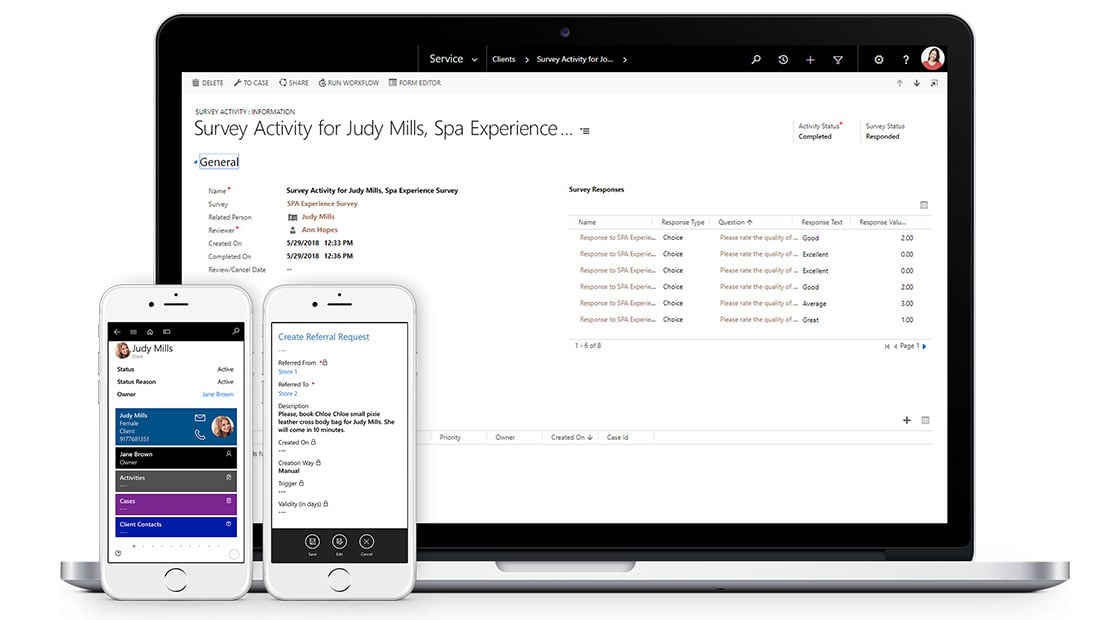Customer
The Customer is a UN-based group of companies present in the variety of industries including luxury retail, hospitality, and eCommerce. An utmost experience and a tailor-made approach to clients are the cornerstones of the Customer’s business philosophy.
Challenge
The Customer approached Our for a comprehensive solution encompassing efficient customer and operations management.
The Customer used to rely solely on the professionalism and communicative skills of their team to maintain excellent customer service at each company separately. However, they matured to enter the next level of a highly personalized approach to clients within their whole ecosystem. This called for a unified client base that gives access to all-embracing client information. As companies managed by the Customer exist separately, the main challenge has been to centralize real-time data flows.
As a part of a targeted top-of-the-line client service, the Customer needed a loyalty program to award clients by purchase volume and frequency.
Along with improving the quality of client communication, the Customer sought to automate some daily activities. For example, they needed a smart solution for case management to avoid the risk of overlooking client issues due to human error.
Also, the Customer needed a handy tool for efficient operations management to gain greater visibility into daily operations.
Solution
To meet all the business needs, Our Team proposed Microsoft Dynamics CRM implementation. The project team focused on two key tasks – to customize the platform in line with all the Customer’s requirements and solve the challenge of centralizing data from multiple sources.
Striving to make the customer service personalized for clients, convenient for the staff, and transparent for managers, we came up with the following functionality:
- A comprehensive CRM profile houses available client information delivered by enterprise systems (like contact details, wish lists, orders) and entered by the Customer’s team members (like client’s character traits, behavioral characteristics, personal style).
- Automated case management is achieved by creating customer service teams in the CRM and adding assignment and escalation rules for case flows.
- We created experience surveys sent to clients automatically after their interaction with companies. To let the Customer get direct feedback on their service while remaining non-intrusive for clients, We provided for a convenient way of conducting surveys by email and the possibility for the staff to turn off surveys in a CRM profile.
- A two-step loyalty program was implemented to maintain an appropriate level of exclusivity for luxury retail. The CRM system automatically assigns scoring levels based on the predefined criteria, then sales teams check the levels in clients’ profiles and reward them accordingly.
- Referrals serve as an internal communication channel for the Customer’s businesses. When needed, they inform one another about clients’ needs and interests, book services and ensure that clients are welcomed as long-awaited guests.

Operations management benefits from CRM implementation due to the following functionality:
- A set of calendars (business facility, personal, working hours and business).
- Goal setting and management functionality.
- Personal dashboards for sales activity monitoring.
- Facility management for storing comprehensive information about the infrastructure.
To enable data centralization from multiple sources into one CRM system, we offered to implement a data warehouse (DWH). There, the data gets integrated, cleaned, and unified to be further transferred to the CRM.
There are two scenarios of how different data types get to the DWH:
- The data from a customer profile (full name, gender, contact details, etc.) arrives immediately in the DWH. Some third-party systems deliver the data using the push method. With others, the DWH pulls the data at a predefined schedule.
- Meanwhile, there are separate staging databases for electronic systems of each company that collect raw transactional data on an hourly basis. After the data gets unified and deduplicated in staging databases, it is exported to the DWH.
Our Team has also created OLAP cubes to provide the Customer with advanced analytics capabilities. Once a day, the data gets exported from the DWH for further analysis. The Customer gets it visualized in dashboards, pre-defined and ad-hoc reports.
Results
With the CRM, the Customer brings their companies under one umbrella. Having their client data centralized and daily processes automated, the Customer upgrades client service within their whole business to a new quality level – team members serve repeat clients and cross-sell more effectively while the risk of human negligence regarding client service is minimized. The Customer builds trust with clients and contributes to their loyalty with bonuses. Business managers get real-time analytics concerning customer management activities and are always up-to-date with current cases, goals, and scheduled activities of their team.
Technologies and Tools
Microsoft Dynamics CRM, MS SQL Server including Microsoft SQL Analysis Services and Microsoft SQL Server Reporting Services

